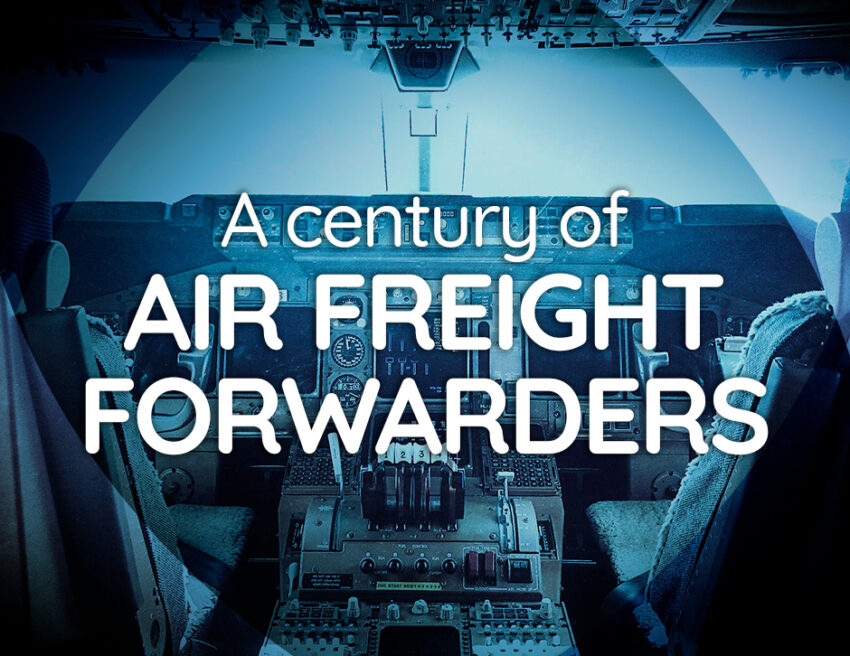1910: The First Air Freight Shipment
The birth of air freight can be traced to 1910 when a department store in the U.S. sent 200 pounds of silk from Dayton to Columbus, Ohio. This shipment marked the first instance of cargo-only air transport. Using a Model B plane designed by the Wright Brothers, the shipment successfully raced against an express train, covering the 65-mile distance in just 57 minutes. This achievement highlighted the potential of air transport for moving goods quickly, setting the stage for air freight forwarders to emerge as essential players in global logistics.
1920s: Combining Cargo and Passenger Transport
In the 1920s, air freight forwarders saw new opportunities as planes began carrying both passengers and goods. This dual-purpose transport model continues today, with many passenger flights also carrying cargo. The development of more reliable aircraft allowed planes to travel longer distances, even across oceans, expanding the scope of air freight shipping significantly.
Fast Fact: In 1919, the first scheduled flight from London to Paris carried an unusual combination of cargo, including leather for shoemakers and grouse for a restaurant!
World War II: Accelerating the Growth of Air Freight Forwarders
World War II marked a period of rapid advancement in aviation technology. Planes became a primary means for transporting troops, weapons, and supplies, which led to larger aircraft with greater cargo space. This military necessity accelerated the development of air freight capabilities and laid the groundwork for modern cargo aircraft, giving air freight forwarders the tools to scale their services worldwide.
1945: Air Freight Gains Momentum
In 1945, the formation of the International Air Transport Association (IATA) established crucial regulations for air freight operations. Around this time, all-cargo airlines began to emerge, though many still operated as mixed cargo and passenger flights. The real game-changer for air freight shipping came in 1968 with Boeing’s launch of the 747, the first wide-body plane designed to transport full pallets, enabling air freight forwarders to handle larger volumes more efficiently.
The 1990s: The Express Parcel Boom
The 1990s saw a major shift in air cargo shipping with the rise of express parcel carriers such as FedEx, DHL, and UPS. These companies pioneered the concept of next-day and two-day deliveries, meeting the growing demand for faster shipping driven by the rise of e-commerce. The internet transformed global trade, making air freight forwarders a key link in the supply chain for businesses worldwide.
Fast Fact: Without air freight, today’s concept of “express delivery” would be impossible, as air shipping can reduce transit times from weeks (by sea) to just a few days.
Present Day: The Role of Air Freight Forwarders in a Global Marketplace
Today, air freight companies are indispensable to global trade. The growth of e-commerce has created a global marketplace where consumers expect faster delivery times. Air freight offers speed, reliability, and security, particularly for high-value or time-sensitive goods like electronics, pharmaceuticals, and perishables. Despite its higher cost compared to sea freight, air freight shipping provides critical benefits, including frequent flight schedules and minimized delays, which is especially valuable for businesses managing complex supply chains.
Why Businesses Choose Air Freight Forwarders Today:
- Speed: Air freight is the fastest way to move goods worldwide, with transit times of days instead of weeks.
- Reliability: With frequent daily flights, shipments are less prone to delays than sea freight. If a shipment misses a flight, it can usually be rebooked quickly.
- Security: Airports have strict security protocols, reducing the risk of damage or theft, making air freight particularly appealing for high-value items.
- Global Reach: Air freight reaches even the most remote locations, enabling global markets to remain interconnected efficiently.
The Future of Air Freight Forwarding
The future of air freight shipping looks bright, with innovations poised to make the process even more efficient and environmentally friendly. From the rise of cargo drones to advancements in fuel efficiency and automation at airports, air freight forwarders will continue to benefit from technological developments that reduce costs, speed up delivery, and enhance security. As global trade grows, air freight will remain essential, connecting businesses and consumers across continents like never before.
Conclusion
From its early beginnings with a 200-pound silk shipment in 1910 to today’s global network of cargo planes and express parcel services, air freight forwarders have come a long way. The ability to move goods quickly, securely, and reliably has made air freight a critical element of modern commerce. As technology advances and global trade evolves, the role of air freight forwarders in shaping the future of logistics will only grow stronger, bringing the world closer, one shipment at a time.



